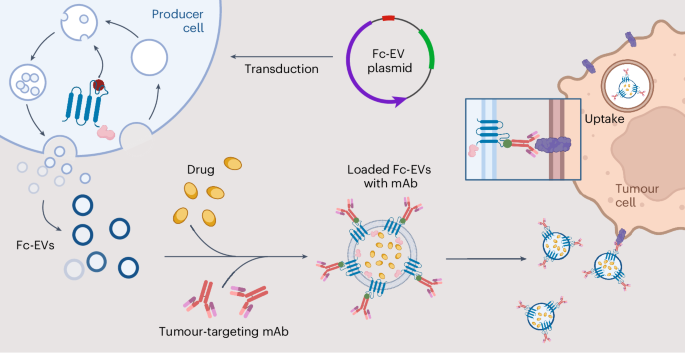2024-05-20 カリフォルニア大学サンディエゴ校(UCSD)
カリフォルニア大学サンディエゴ校の研究者は、ショウジョウバエが少数の嗅覚ニューロンで複雑な匂いを認識する方法を解明しました。彼らの研究によると、ショウジョウバエの嗅覚システムは、中央脳での処理に先立ち、周辺部で匂い信号を「前処理」しています。これは、触角の感覚毛にある2つの嗅覚受容体ニューロン(ORN)が電気的に相互作用し、匂い信号の「要旨」を迅速に計算することによって実現されます。この前処理により、匂いが「良いか悪いか」を判断し、その情報が中央脳に送られて行動反応を引き起こします。研究は、匂い信号の処理が周辺部の構造に強く依存していることを示しており、このメカニズムは他の感覚系の研究や高性能な検出装置の設計に役立つ可能性があります。
<関連情報>
- https://today.ucsd.edu/story/detecting-odors-on-the-edge-researchers-decipher-how-insects-smell-more-with-less
- https://www.pnas.org/doi/10.1073/pnas.2316799121
- https://www.pnas.org/doi/10.1073/pnas.2120134119
ショウジョウバエの末梢前処理が匂いの分類を容易にする Peripheral preprocessing in Drosophila facilitates odor classification
Palka Puri, Shiuan-Tze Wu, Chih-Ying Su, and Johnatan Aljadeff
Proceedings of the National Academy of Sciences Published:May 16, 2024
DOI:https://doi.org/10.1073/pnas.2316799121

Significance
Insects rely on compact nervous systems to process sensory information. To find principles of information processing in “shallow” neural architectures, we studied odor-mixture “preprocessing” in Drosophila, which is implemented by genetically predetermined electrical interactions between olfactory receptor neurons. We show that preprocessing facilitates classification of i) innately meaningful odors, by amplifying their hedonic valence signal; and ii) novel odors, by modifying the geometrical structure of neuronal responses to odor-mixture stimuli. Our work suggests that connectivity from the periphery to downstream brain-centers mediating innate and learned odor-guided behaviors is optimally aligned to take advantage of peripheral preprocessing. By elucidating how a peripheral network in the insect brain implements sophisticated computations, we give insight into general principles of efficient sensory processing algorithms.
Abstract
The mammalian brain implements sophisticated sensory processing algorithms along multilayered (“deep”) neural networks. Strategies that insects use to meet similar computational demands, while relying on smaller nervous systems with shallow architectures, remain elusive. Using Drosophila as a model, we uncover the algorithmic role of odor preprocessing by a shallow network of compartmentalized olfactory receptor neurons. Each compartment operates as a ratiometric unit for specific odor-mixtures. This computation arises from a simple mechanism: electrical coupling between two differently sized neurons. We demonstrate that downstream synaptic connectivity is shaped to optimally leverage amplification of a hedonic value signal in the periphery. Furthermore, peripheral preprocessing is shown to markedly improve novel odor classification in a higher brain center. Together, our work highlights a far-reaching functional role of the sensory periphery for downstream processing. By elucidating the implementation of powerful computations by a shallow network, we provide insights into general principles of efficient sensory processing algorithms.
末梢嗅覚処理における価数反対性 Valence opponency in peripheral olfactory processing
Shiuan-Tze Wu, Jen-Yung Chen, Vanessa Martin, +5, and Chih-Ying Su
Proceedings of the National Academy of Sciences Published:January 28, 2022
DOI:https://doi.org/10.1073/pnas.2120134119

Significance
Are olfactory receptor neurons (ORNs) arranged in a functionally meaningful manner to facilitate information processing? Here, we address this long-standing question by uncovering a valence map in the olfactory periphery of Drosophila. Within sensory hairs, we find that neighboring ORNs antagonistically regulate behaviors: stereotypically compartmentalized large- and small-spike ORNs, recognized by their characteristic spike amplitudes, either promote or inhibit the same type of behavior, respectively. Systematic optogenetic and thermogenetic assays—covering the majority of antennal sensilla—highlight a valence-opponent organization. Critically, odor-mixture behavioral experiments show that lateral inhibition between antagonistic ORNs mediates robust behavioral decisions in response to countervailing cues. Computational modeling predicts that the robustness of behavioral output depends on odor mixture ratios.
Abstract
A hallmark of complex sensory systems is the organization of neurons into functionally meaningful maps, which allow for comparison and contrast of parallel inputs via lateral inhibition. However, it is unclear whether such a map exists in olfaction. Here, we address this question by determining the organizing principle underlying the stereotyped pairing of olfactory receptor neurons (ORNs) in Drosophila sensory hairs, wherein compartmentalized neurons inhibit each other via ephaptic coupling. Systematic behavioral assays reveal that most paired ORNs antagonistically regulate the same type of behavior. Such valence opponency is relevant in critical behavioral contexts including place preference, egg laying, and courtship. Odor-mixture experiments show that ephaptic inhibition provides a peripheral means for evaluating and shaping countervailing cues relayed to higher brain centers. Furthermore, computational modeling suggests that this organization likely contributes to processing ratio information in odor mixtures. This olfactory valence map may have evolved to swiftly process ethologically meaningful odor blends without involving costly synaptic computation.


